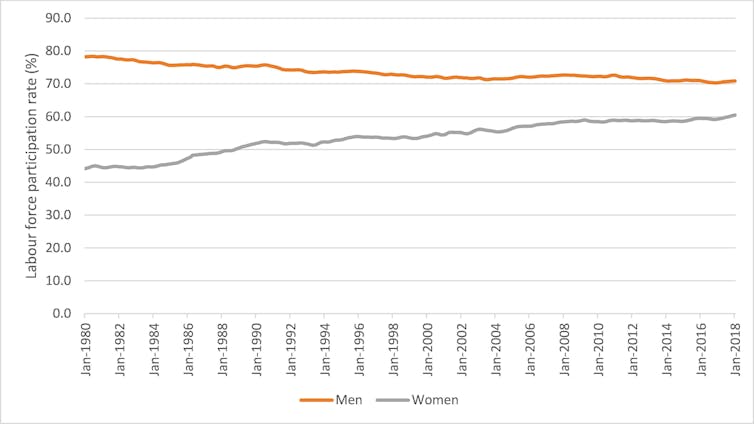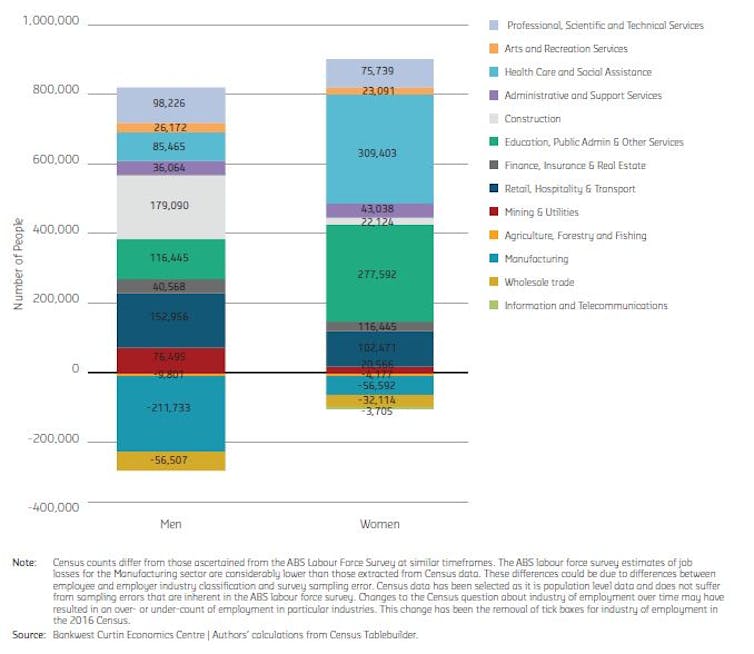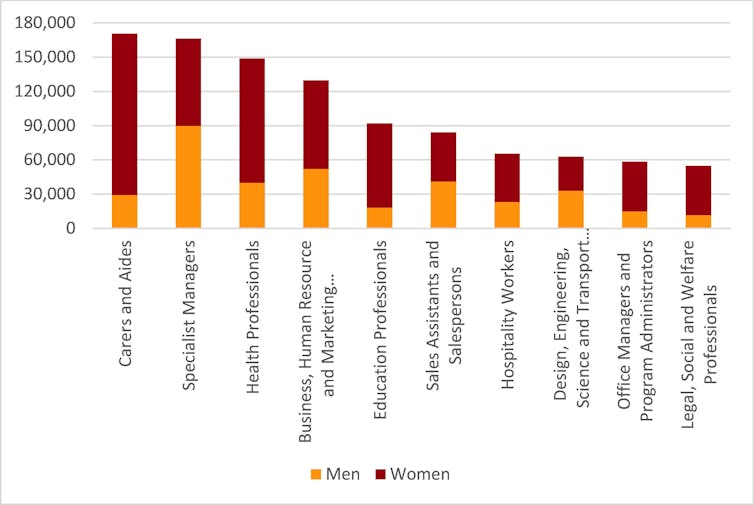From The Conversation.
One Nation leader Pauline Hanson has proposed a plebiscite be held in tandem with the next federal election to allow voters to have “a say in the level of migration coming into Australia”.
Hanson has suggested cutting Australia’s Migration Programme cap from the current 190,000 people per year to around 75,000-100,000 per year.
On Sky News, Hanson said Australia is “the highest growing country in the world”.
The senator added that at 1.6%, Australia’s population growth was “double [that of] a lot of other countries”.
Are those statements correct?
Checking the source
In response to The Conversation’s request for sources and comment, a spokesperson for Pauline Hanson said the senator “talks about population growth in the context of our high level of immigration because in recent years, immigration has accounted for around 60% of Australia’s population growth”.
The spokesperson added:
Australian Bureau of Statistics migration data for 2015-16 show that Australians born overseas represent 28% of the population, far higher than comparable countries like Canada (22%), UK (13%) or the US (14%).
World Bank data for 2017 show that Australia’s population growth was 1.6%, much higher than comparable countries with immigration programs like Canada (1.2%), the UK (0.6%) and the US (0.7%).
Verdict
One Nation leader Pauline Hanson was correct to say Australia’s population grew by 1.6% in the year to June 2017. But she was incorrect to say Australia is “the highest growing country in the world”.
According to the most accurate international data, the country with the fastest growing population is Oman, on the Arabian Peninsula.
Senator Hanson said Australia’s 1.6% population growth was “double than a lot of other countries”. It is fair to say that Australia’s population growth rate is double that of many other countries, including the United States (0.7%) and United Kingdom (0.7%), for example.
Since Hanson’s statement, Australia’s population growth rate for the period ending June 2017 has been revised upwards to 1.7%. But Hanson’s number was correct at the time of her statement, and the revision doesn’t change the outcome of this FactCheck.
In terms of the 35 countries in the Organisation for Economic Cooperation and Development (OECD), Luxemberg was the fastest growing country in 2016, with Australia coming in fifth.
Caution must be used when making international population comparisons. It’s important to put the growth rates in the context of the total size, density and demographic makeup of the population, and the economic stage of the country.
How do we calculate population growth?
A country’s population growth, or decline, is determined by the change in the estimated number of residents. Those changes include the number of births and deaths (known as natural increase), and net overseas migration.
In Australia, both temporary and permanent overseas migrants are included in the calculation of population size.
According to Australian Bureau of Statistics data, Australia’s population grew by 1.6% in the year to June 2017 – as Senator Hanson said.
Since Hanson’s statement, Australia’s population growth rate for the period ending June 2017 has been revised upwards to 1.7%. But as said in the verdict, Hanson’s number was correct at the time of her statement, and the revision doesn’t change any of the other outcomes of this FactCheck.
That’s an increase of 407,000 people in a population of 24.6 million.
All states and territories saw positive population growth in the year to June 2017, with Victoria recording the fastest growth rate (2.4%), and South Australia recording the slowest growth rate (0.6%).
Read more: FactCheck: is South Australia’s youth population rising or falling?
Is Australia’s population the ‘highest growing in the world’?
No, it’s not.
There are different ways of reporting population data.
Population projections are statements about future populations based on certain assumptions regarding the future of births, deaths and migration.
Population estimates are statistics based on data from a population for a previous time period. Population estimates provide a more accurate representation of actual dynamics.
World Bank data for 2016 (based on population estimates) provide us with the most accurate international comparison.
According to those data, Australia’s growth rate – 1.5% for 2016 – placed it at 86th in the world. The top 10 ranked countries grew by between 3-5%.
How does Australia’s growth compare to other OECD countries?
Comparison of Australia’s average annual population growth with other OECD countries shows Australia’s rate of population growth is among the highest in the OECD, but not the highest.
This is true whether we look at annual averages for five year bands between 1990 and 2015, or single year data.
Looking again at the World Bank data, Australia’s rate of population growth for 2016, at 1.5%, was double that of many other OECD countries, including the United Kingdom (0.7%) and United States (0.7%).
Permanent vs temporary migration levels
Hanson has proposed a national vote on what she describes as Australia’s “run away rates of immigration”.
The senator has suggested reducing Australia’s Migration Programme cap from the current level of 190,000 people per year to 75-100,000 people per year. The expected intake of 190,000 permanent migrants was not met over the last few years. Permanent migration for 2017-18 has dropped to 162,400 people, due to changes in vetting processes.
The greatest contribution to the growth of the Australian population (63%) currently comes from overseas migration, as Hanson’s office noted in their response to The Conversation.
The origin countries of migrants are becoming more diverse, posing socioeconomic benefits and infrastructure challenges for Australia.
Sometimes people confuse net overseas migration (the total of all people moving in and out of Australia in a certain time frame), with permanent migration (the number of people who come to Australia to live). They are not the same thing.
Net overseas migration includes temporary migration. And net overseas migration is included in population data. This means our population growth reflects our permanent population, plus more.
Temporary migrants are a major contributor to population growth in Australia – in particular, international students.
In the most recent data (2014-15), net temporary migrants numbered just under 132,000, a figure that included just over 77,000 net temporary students.
The international student market is Australia’s third largest export.
Looking back at Australia’s population growth
Population changes track the history of the nation. This includes events like post-war rebuilding – including the baby boom and resettlement of displaced European nationals – to subsequent fluctuations in birth rates, and net overseas migration.
We can see these events reflected in the rates of growth from 1945 to the present.
The rate of population growth in Australia increased markedly in 2007, before peaking at 2.1% in 2009 (after the height of the global financial crisis, in which the Australian economy fared better than many others).
Since 2009, annual population growth has bounced around between a low of 1.4% and a high of 1.8%.
The longer term average for population growth rates since 1947 is 1.6% (the same as it is currently).
Interpreting population numbers
It’s worth remembering that a higher growth rate per annum coming from a lower population base is usually still lower growth in terms of actual numbers of people, when compared to a lower growth rate on a higher population base.
There can also be significant fluctuations in population growth rates from year to year – so we need to use caution when making assessments based on changes in annual rates.
Economic factors, government policies, and special events are just some of the things that can influence year-on-year population movements.
Other factors we should consider when making international comparisons include the:
- total size of the population
- population density
- demographic composition, or age distribution, of the population, and
- the economic stage of the country (for example, post industrialisation or otherwise).
Any changes to the migration program should be considered alongside the best available research. – Liz Allen
Blind review
The FactCheck is fair and correct.
The statement about Australia’s population growth rate over the year to June 30, 2017, is correct. The preliminary growth rate published by the Australian Bureau of Statistics at the time of Senator Hanson’s statement was 1.60%; the rate was subsequently revised to 1.68%.
It is also true that many developed countries have lower population growth rates than Australia, but some have higher rates. According to United Nations Population Division population estimates, Oman had the fastest growing population between 2014 and 2015 (the latest data available).
With regards to misinterpretations of net overseas migration, it should also be stated that some people think this refers to the number of people migrating to Australia. It is actually immigration minus emigration – the difference between the number arriving and the number leaving. – Tom Wilson
Author: Liz Allen Demographer, ANU Centre for Social Research and Methods, Australian National University; Reviewer
Tom Wilson Principal Research Fellow, Charles Darwin University














